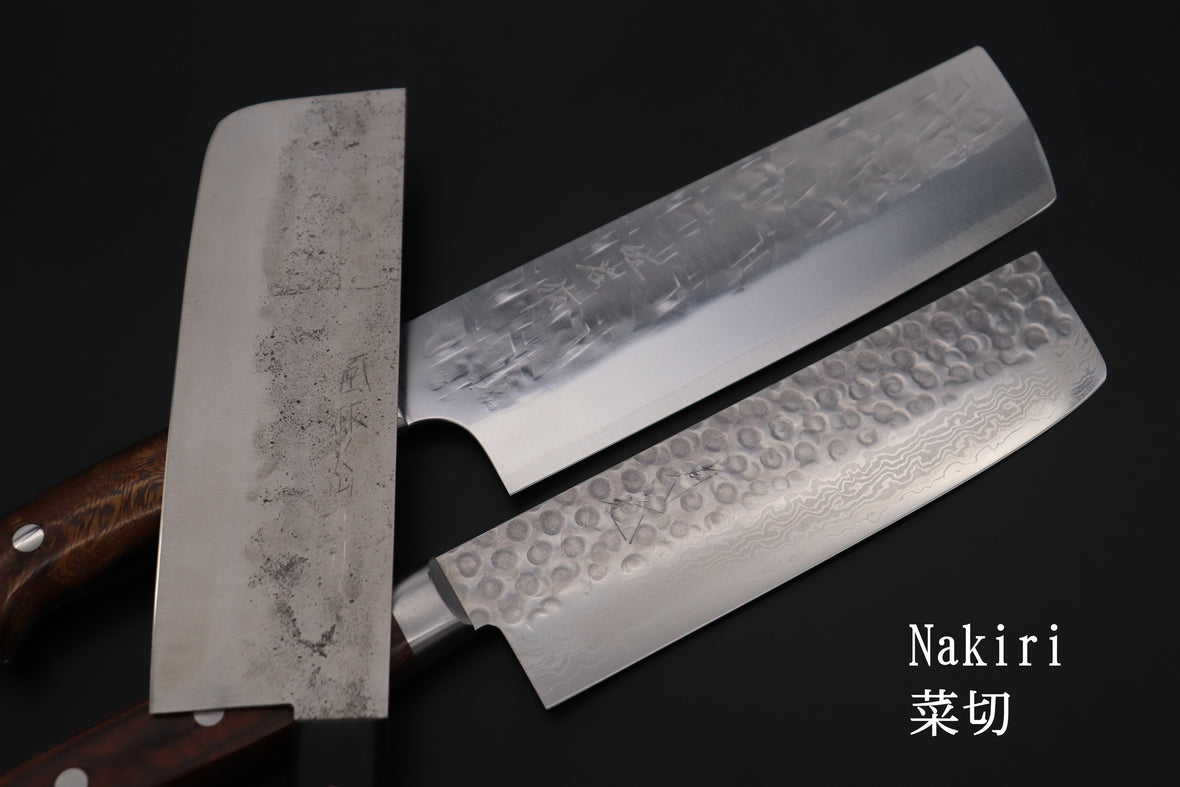We Offer DHL EXPRESS Flat Rate Shipping Worldwide. Just $10 USD for US, Canada, Australia, Asian countries. US$15 for Europe and other Countries in the world

The Nakiri is a double bevel edged knife with thin blade profile and popular throughout Japan, it is mainly used by home cooks for quickly and efficiently chopping, slicing, and mincing vegetables, fruits, becoming popular knife among vegetarians.
Despite often being mistaken for a small Chinese Cleaver, the Nakiri is too thin and lightweight for heavy-duty chopping, and should certainly not be used to cut bones or very hard materials. The Usuba is the single bevel edged alternative to the Nakiri, and it was similarly developed specifically for cutting vegetables. The Usuba has a thicker and heavier blade than the Nakiri, and is also available in longer blade lengths.
Like the Santoku, the Nakiri generally has a slightly taller blade than a similarly sized Gyuto or Petty knife. This provides a little more clearance for the knuckles of your knife hand when cutting directly above a cutting board, and also provides a good blade surface for the knuckles of your free hand to guide the blade when 'tap chopping’, ‘push cutting’, or ‘pull cutting’.
One distinct advantage of the rectangular blade profile of the Nakiri is that, unlike the non-rectangular blades of the Santoku and Gyuto, they do not become significantly shorter in length as the blade is repeatedly sharpened.
Nakiri 165mm and 180mm sizes are being popular choices.
For a deeper understanding of the Nakiri knife — its thin blade, straight edge, and ideal use for vegetables — visit our Nakiri Blog.
Discover our recommended models and the craftsmanship behind them.
No products found in this collection